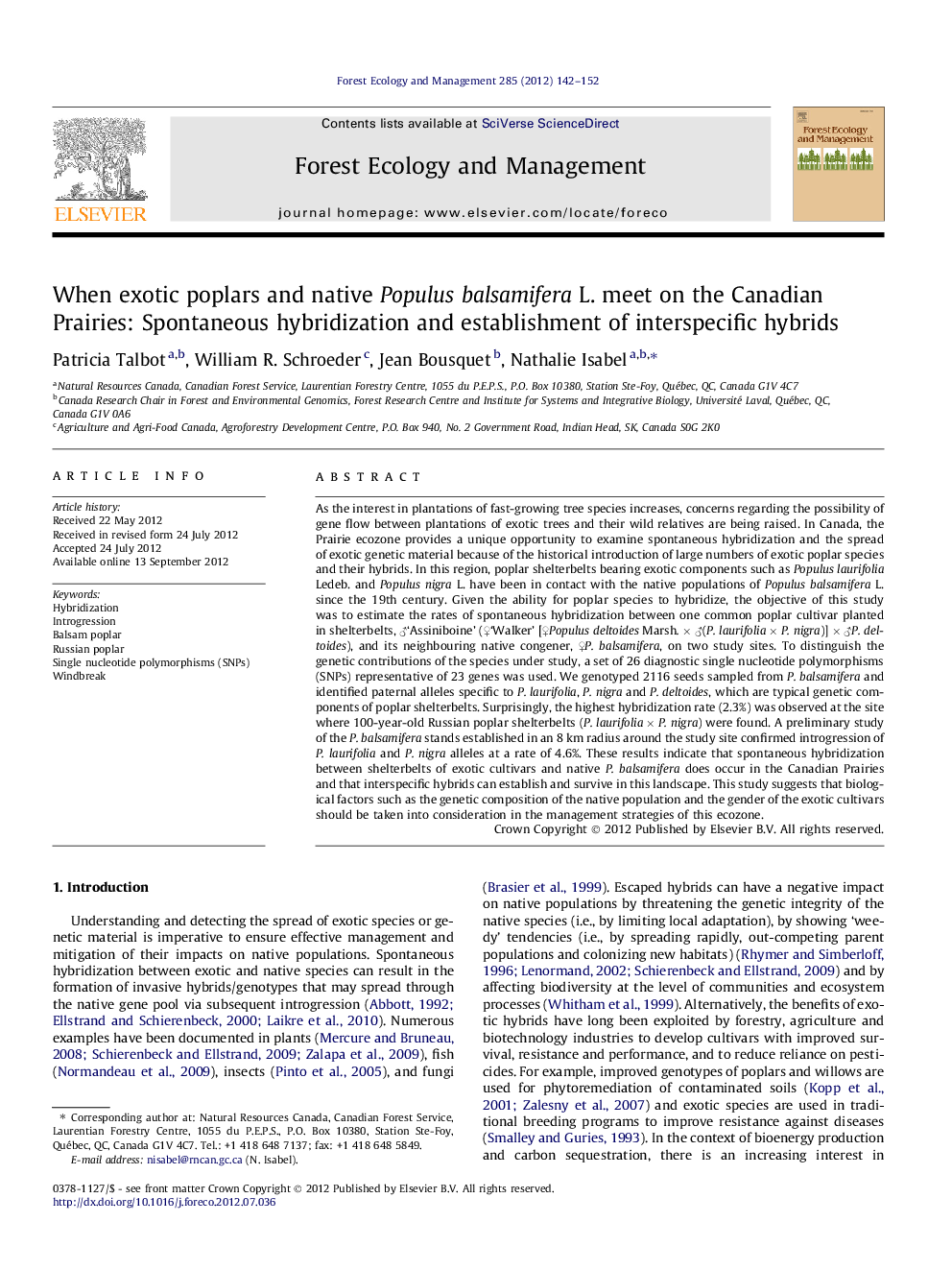| کد مقاله | کد نشریه | سال انتشار | مقاله انگلیسی | نسخه تمام متن |
|---|---|---|---|---|
| 87203 | 159237 | 2012 | 11 صفحه PDF | دانلود رایگان |

As the interest in plantations of fast-growing tree species increases, concerns regarding the possibility of gene flow between plantations of exotic trees and their wild relatives are being raised. In Canada, the Prairie ecozone provides a unique opportunity to examine spontaneous hybridization and the spread of exotic genetic material because of the historical introduction of large numbers of exotic poplar species and their hybrids. In this region, poplar shelterbelts bearing exotic components such as Populus laurifolia Ledeb. and Populus nigra L. have been in contact with the native populations of Populus balsamifera L. since the 19th century. Given the ability for poplar species to hybridize, the objective of this study was to estimate the rates of spontaneous hybridization between one common poplar cultivar planted in shelterbelts, ♂‘Assiniboine’ (♀‘Walker’ [♀Populus deltoides Marsh. × ♂(P. laurifolia × P. nigra)] × ♂P. deltoides), and its neighbouring native congener, ♀P. balsamifera, on two study sites. To distinguish the genetic contributions of the species under study, a set of 26 diagnostic single nucleotide polymorphisms (SNPs) representative of 23 genes was used. We genotyped 2116 seeds sampled from P. balsamifera and identified paternal alleles specific to P. laurifolia, P. nigra and P. deltoides, which are typical genetic components of poplar shelterbelts. Surprisingly, the highest hybridization rate (2.3%) was observed at the site where 100-year-old Russian poplar shelterbelts (P. laurifolia × P. nigra) were found. A preliminary study of the P. balsamifera stands established in an 8 km radius around the study site confirmed introgression of P. laurifolia and P. nigra alleles at a rate of 4.6%. These results indicate that spontaneous hybridization between shelterbelts of exotic cultivars and native P. balsamifera does occur in the Canadian Prairies and that interspecific hybrids can establish and survive in this landscape. This study suggests that biological factors such as the genetic composition of the native population and the gender of the exotic cultivars should be taken into consideration in the management strategies of this ecozone.
► We estimated gene flow between exotic and native poplars on the Canadian Prairies.
► A set of 26 diagnostic single nucleotide polymorphisms (SNPs) was used.
► Typical exotic components of poplar shelterbelts were detected in Populus balsamifera.
► Highest hybridization rates were detected with 100-year-old Russian poplar cultivars.
► Native population composition and the gender of cultivars influence gene flow.
Journal: Forest Ecology and Management - Volume 285, 1 December 2012, Pages 142–152